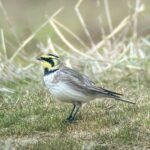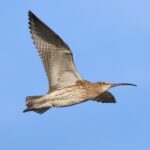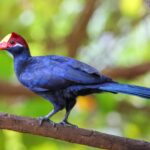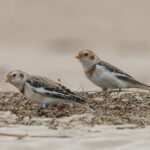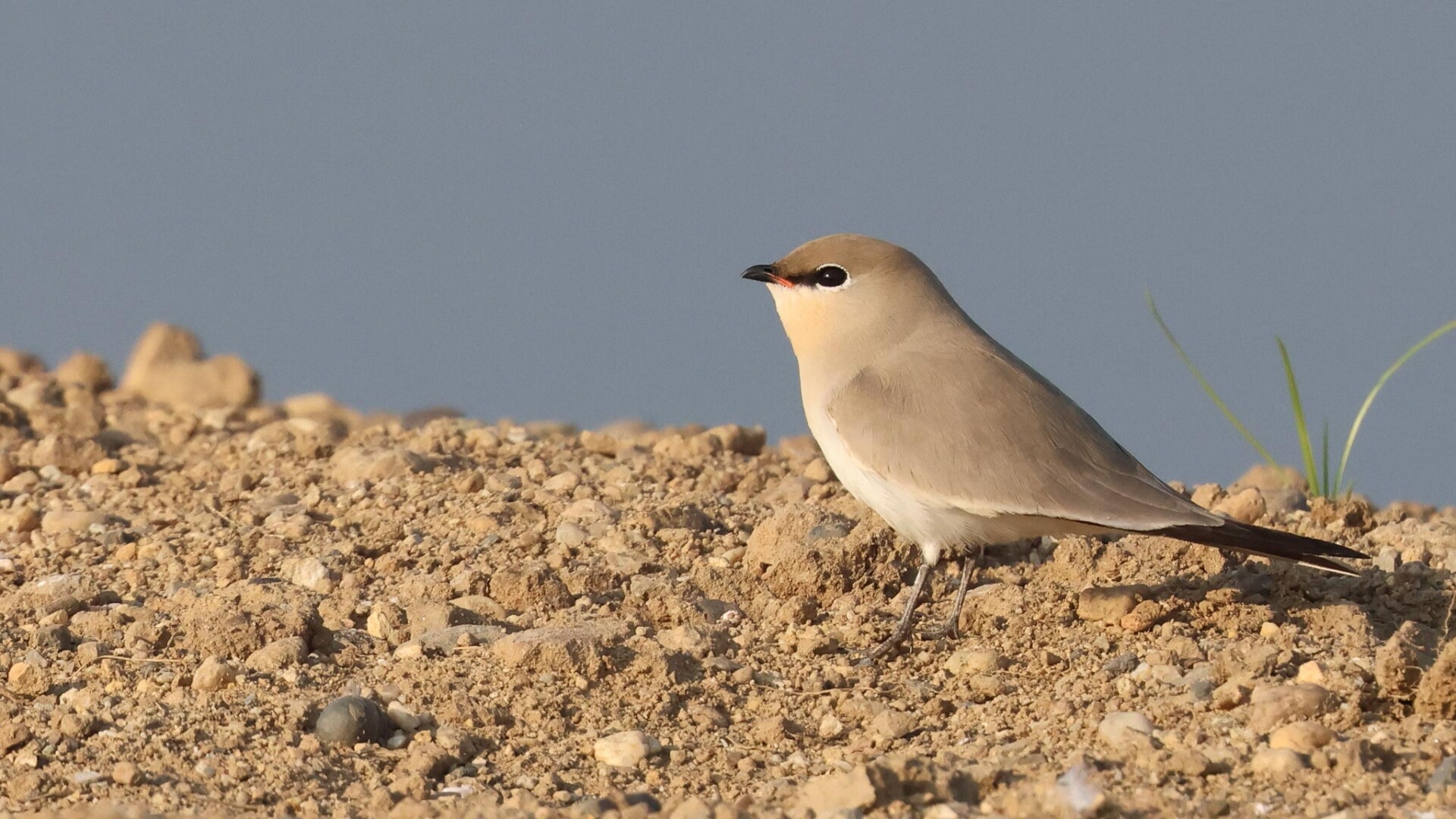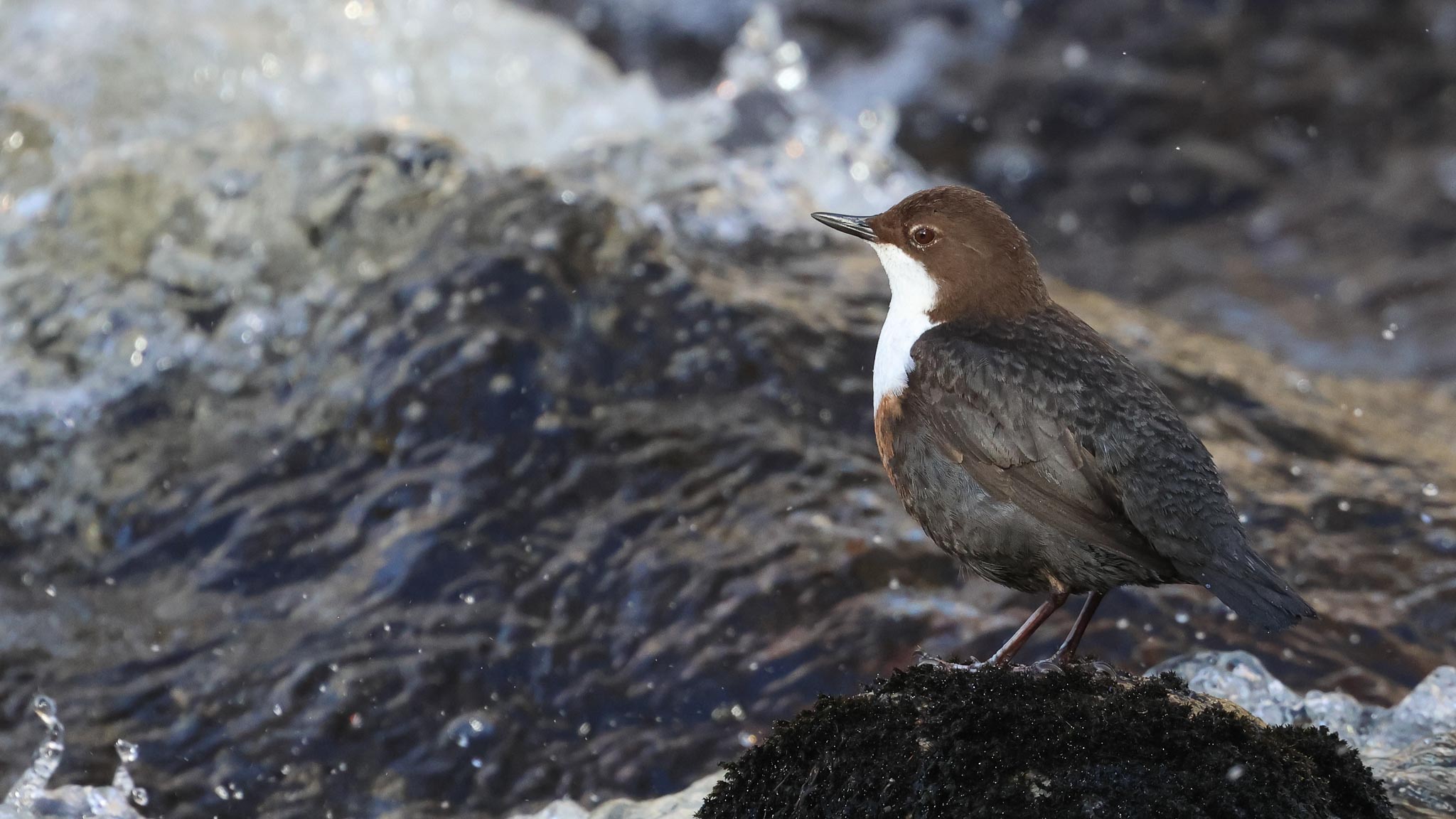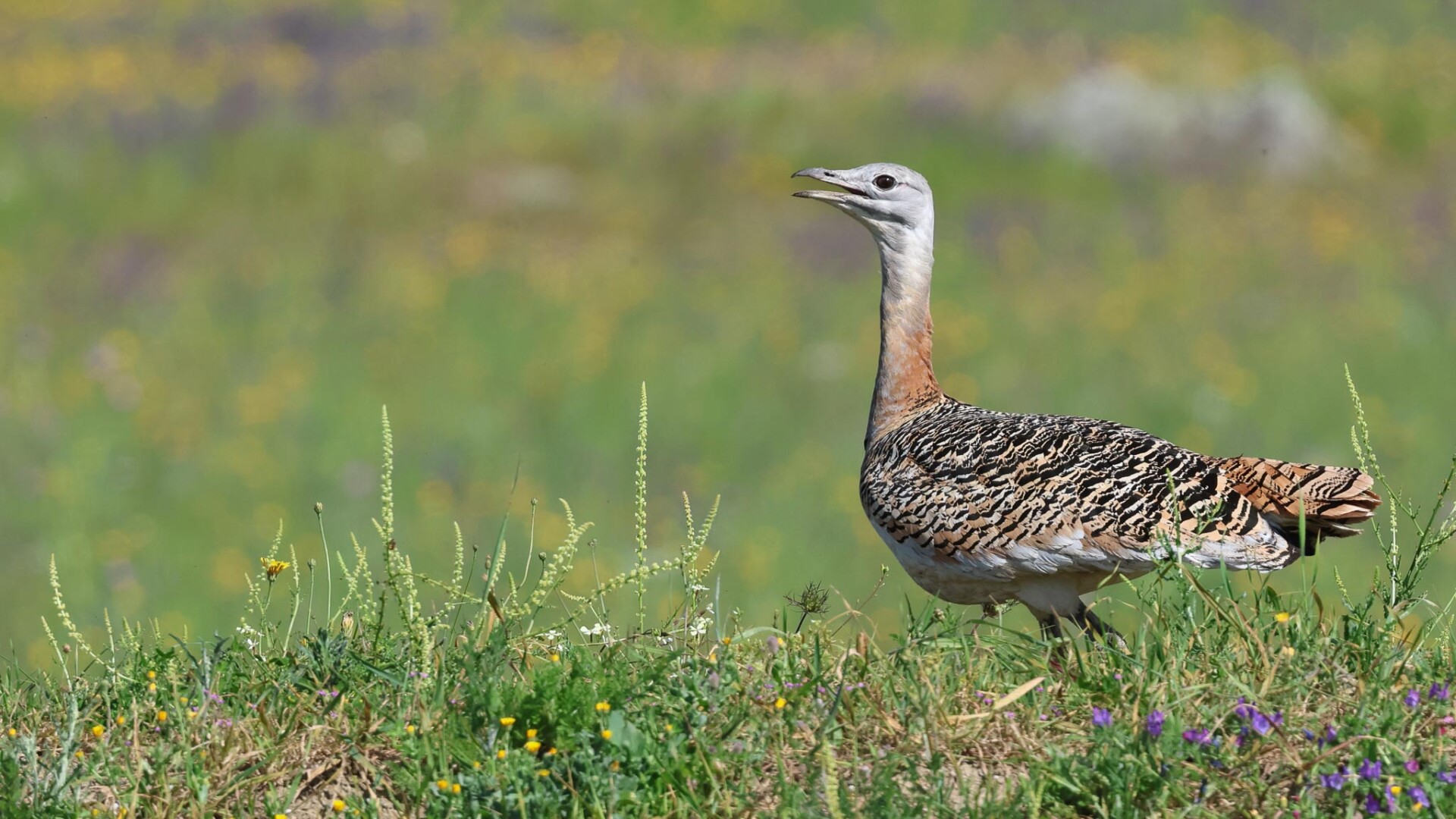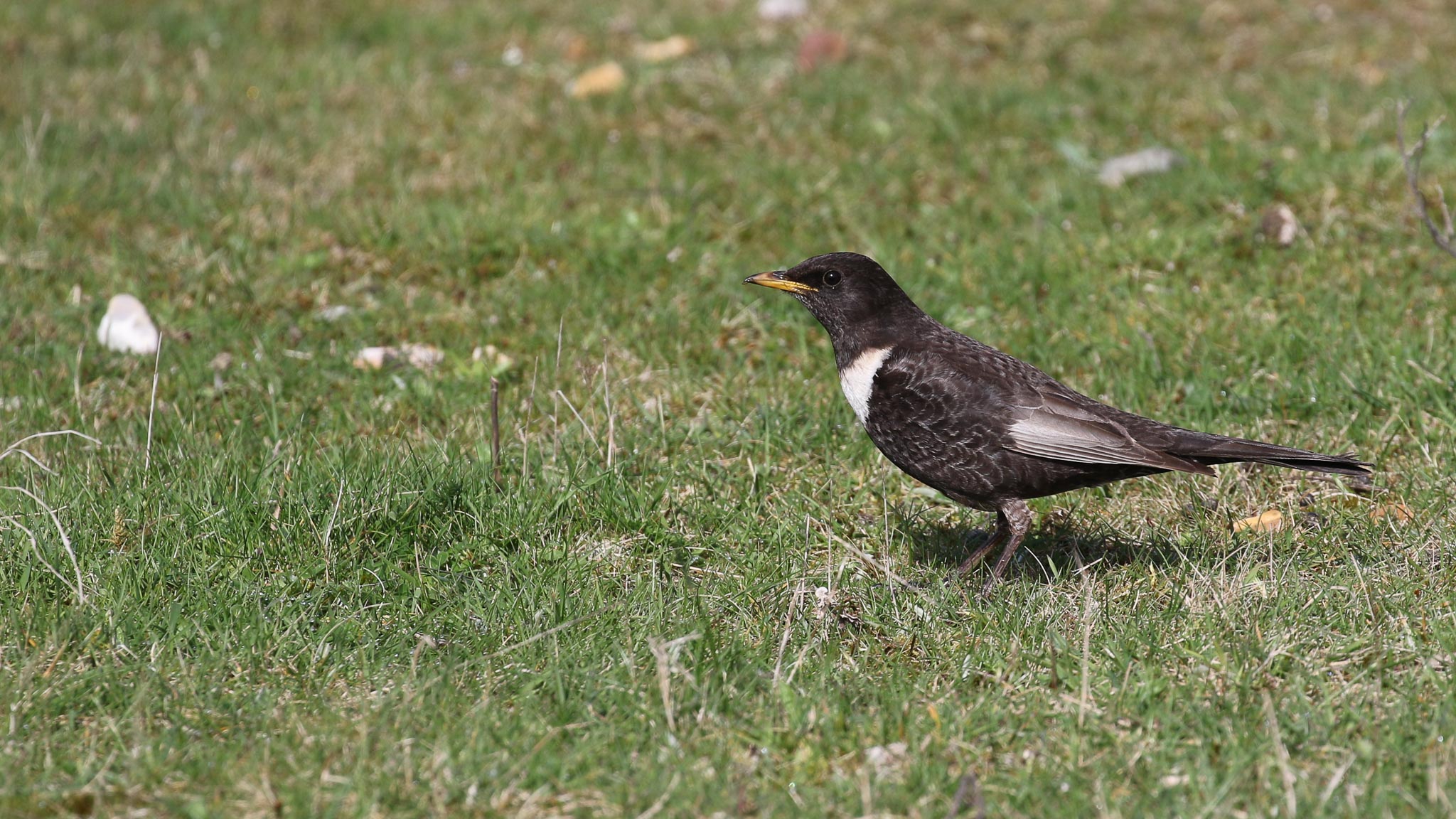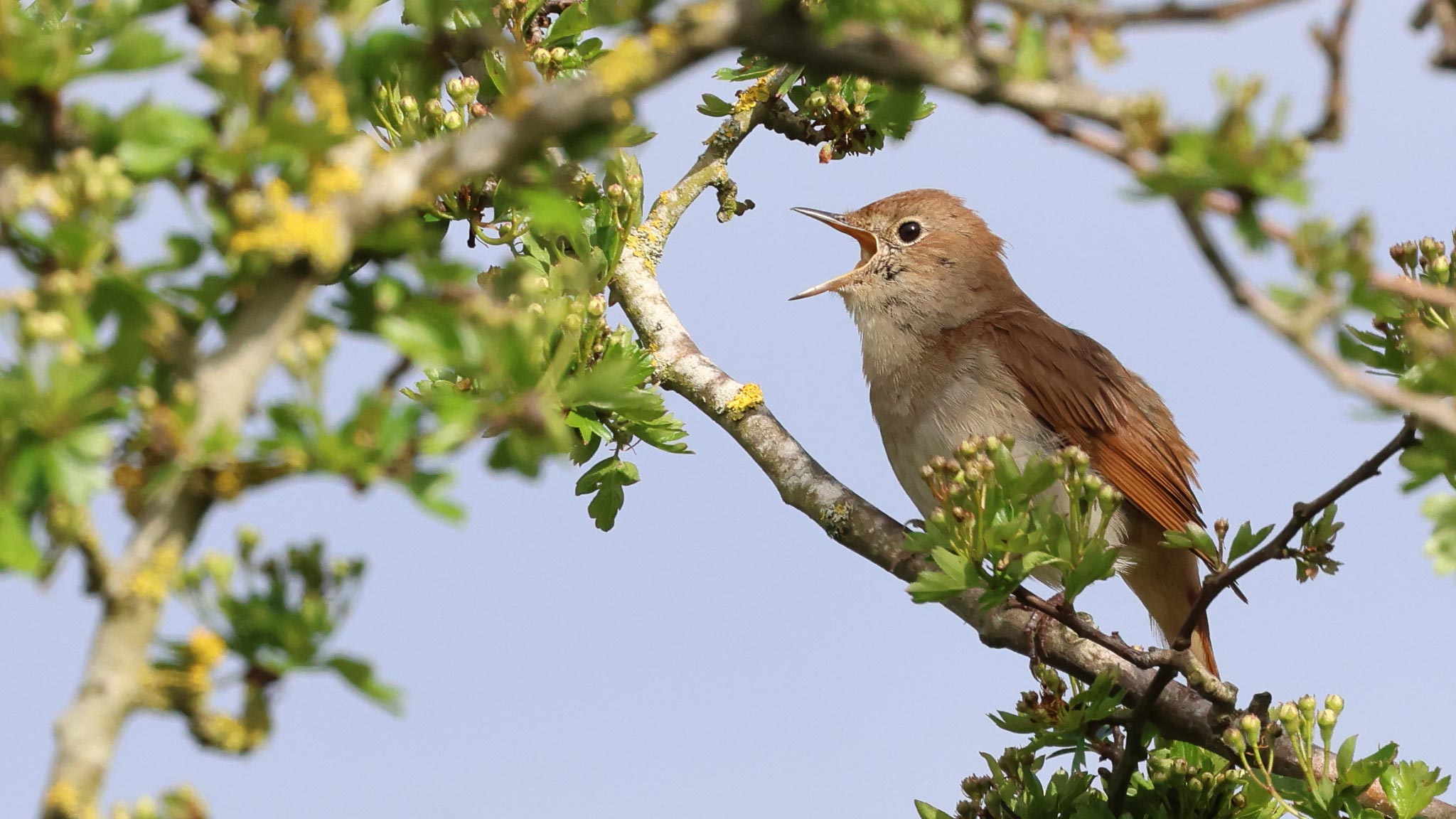Day 3, the final day, of a long weekend of tours today. We made our way east this time, towards Cley. It was another lovely day, a bit hazy on the coast at times, but very pleasant in the sunshine.
The movement of Siskins overhead along the coast has been very much a feature of the past few days and today was no exception. As soon as we got out of the car at Cley, we could hear a small flock calling as they flew west. As we walked out to the hides, a little group of Blue Tits was feeding around the trees.
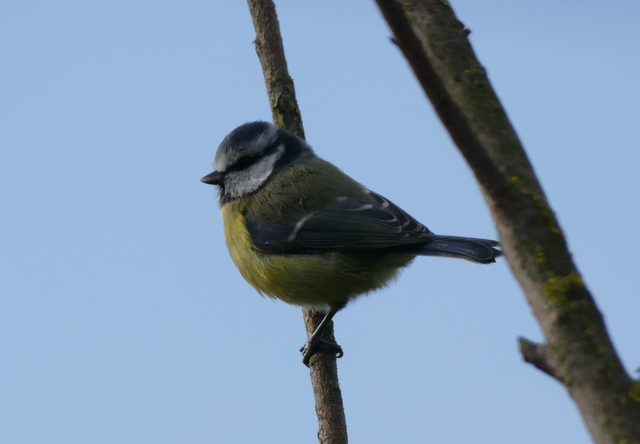 Blue Tit – outside the hides at Cley & showing very well
Blue Tit – outside the hides at Cley & showing very well
Just as we approached the hides, a Sparrowhawk appeared low over the marshes from the direction of Simmond’s Scrape. Two Dunlin flew off calling as it came over. The Sparrowhawk circled up over the Eye Field and was promptly joined by another which flew in from the direction of the West Bank. There was a big difference between them, the bigger bird an adult female and the much smaller one a browner young male. After a brief circle together, they flew off in different directions.
We thought the Sparrowhawk may have cleared all the waders off the scrapes, even though we hadn’t seen many flying off, but once we got into the hides we found them covered with water. After the rain we had late in the week, the water levels are very high again – not good for small waders. There were just a couple of Greenshank on Simmond’s and the usual crowds of Black-tailed Godwit and a few Ruff on Pat’s Pool. The high water levels are good for ducks, and there were plenty of Wigeon, Teal, Gadwall and Shoveler, but not looking their best at the moment, with the drakes still in eclipse plumage.
A young Marsh Harrier perched up in one of the bushes out in the reedbed, preening. A Sparrowhawk appeared and started to buzz it, presumably one of the ones we had seen earlier, although the harrier looked distinctly disinterested. There was not much else to see here, so we decided to try round the other side of the reserve.
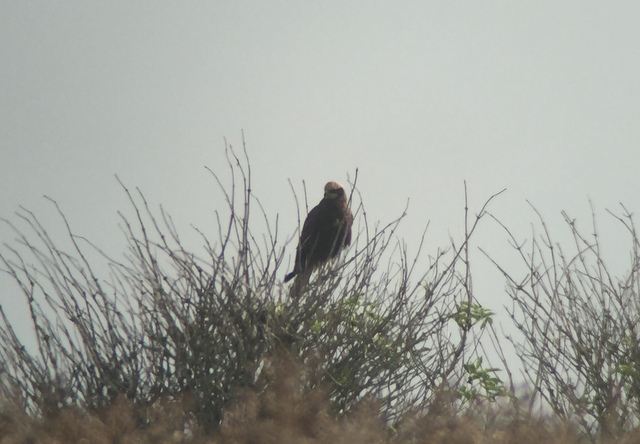 Marsh Harrier – a pale-headed, dark-bodied juvenile
Marsh Harrier – a pale-headed, dark-bodied juvenile
As we drove round towards the beach, a Kingfisher flew up out of the ditch beside the road and disappeared over the grazing marsh. From the beach car park, we walked east along the shingle, pausing to scan the sea as we went. There was a steady stream of Gannets moving east offshore, lots of slaty-grey juveniles and fewer white adults. A few lingering Sandwich Terns were fishing offshore. A little party of three Red-throated Divers flew past and four Common Scoter went the other way. A Guillemot was out on the sea, but it was hard to get in the scope as it was diving constantly.
 Gannets – a white adult following a slaty-grey juvenile
Gannets – a white adult following a slaty-grey juvenile
There were a couple of Wheatears out in the Eye Field, flashing their white tails as they flew, and several Skylarks hiding in the long grass. As well as the Siskins, there were a few parties of Meadow Pipits on the move today and a Grey Wagtail came low overhead with one of them as we walked along the beach (one of several we heard overhead today).
We had a quick look at North Scrape but here too the water levels were too high today. Apart from more ducks, there was very little to see, just four Redshank. However, while we were scanning around the scrape, a shape appeared over the water just in front of us – a Short-eared Owl. We noted its stiff-winged flight action as it came past, before gliding away from us towards Eye Field. It circled out over the grass, turning back towards us before dropping down to the ground on Billy’s Wash, out of view. A few of the local Jackdaws and Rooks thought about mobbing it but couldn’t work up the courage, circling above it for a while. A real bonus – Short-eared Owls are mainly winter visitors but there have been several on and off along the coast throughout this year.
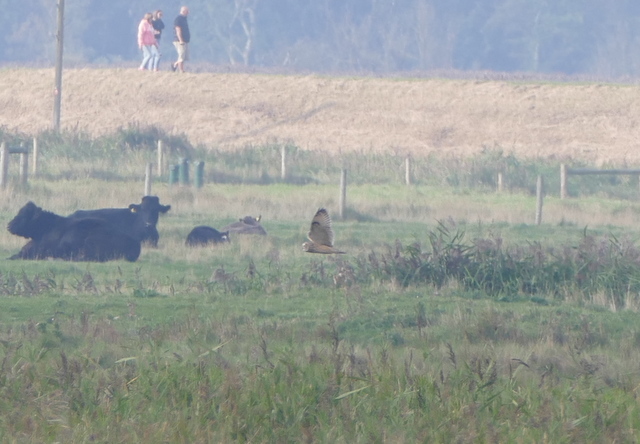 Short-eared Owl – circling over Billy’s Wash
Short-eared Owl – circling over Billy’s Wash
We carried on along the beach as far as the East Bank and had a quick look at Arnold’s Marsh. There was not much of note here either today, lots of Redshank, a flock of roosting Black-tailed Godwits, a couple of Curlew and four Dunlin. We heard a Spotted Redshank overhead, flying back and forth over the reserve, presumably struggling to find somewhere where it wanted to settle to feed. The Little Egret was in its usual place on the brackish pools by the path.
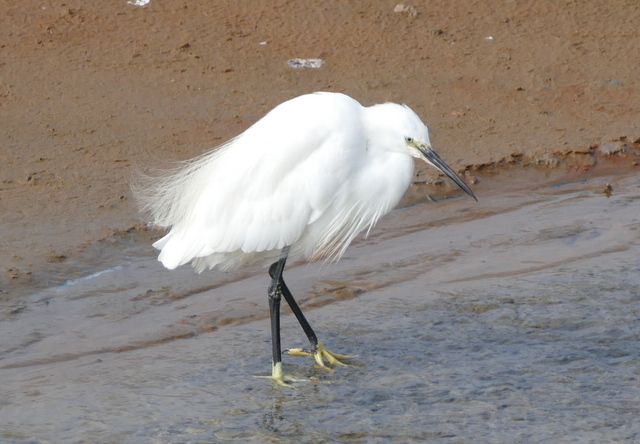 Little Egret – back feeding in its usual place on the brackish pools
Little Egret – back feeding in its usual place on the brackish pools
We had originally intended to spend more of the morning at Cley, but with the high water levels, we decided to try our luck elsewhere. As we walked back to the car, as well as the steady stream of Gannets, we picked up a flock of wildfowl flying in over the sea. It was a bit of a mixed bag – several each of Wigeon and Teal, a single Pintail at the front and four Brent Geese bringing up the rear. Amazing to think that they were just arriving from the continent, from Scandinavia or further across into Russia.
From Cley, we drove a short distance further east along the coast to Kelling and walked down the lane to the Water Meadow. The hedgerows were full of berries and there were lots of Chaffinches, Greenfinches and Goldfinches in there too. A large party of Blue Tits came past with a Chiffchaff singing just behind them. Down at the copse, a Goldcrest appeared briefly on the edge of the trees, followed shortly after by a male Blackcap.
The pool on the Water Meadow was also full of water, though there is no way of managing the water level here to get it lower. The resident pair of Egyptian Geese were sleeping on the grass by the edge and a single Dunlin was rooting around in the wet grass beyond.
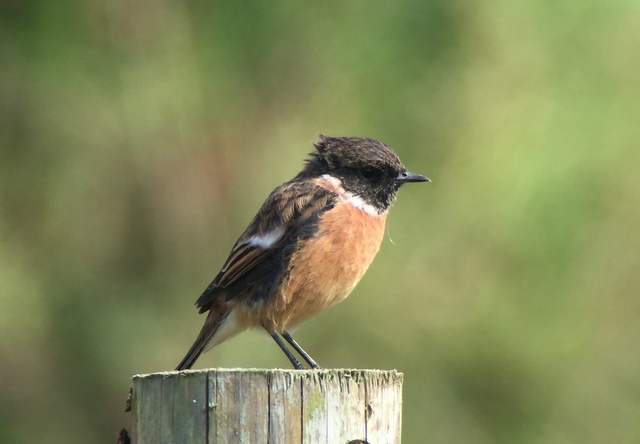 Stonechat – a smart male in the sunshine
Stonechat – a smart male in the sunshine
We had really come here looking for chats. Down by the Quags, it didn’t take long for us to locate the local Stonechats. There were at least six of them today, a mixture of adults and moulting juveniles, perching up on the barbed wire fence and dropping down into the field after insects or flycatching from the brambles. Nearby, we found our first Whinchat as well – paler than the Stonechats and with a striking pale supercilium. It was a bit further over, so we decided to walk up the hill to get a better look.
Just around the corner, we almost walked past a Meadow Pipit creeping through the grass right next to the path. It froze as we approached and was next to impossible to see until you knew where it was hiding. Finally, we got too close and it flew up and dropped into the field beyond the fence.
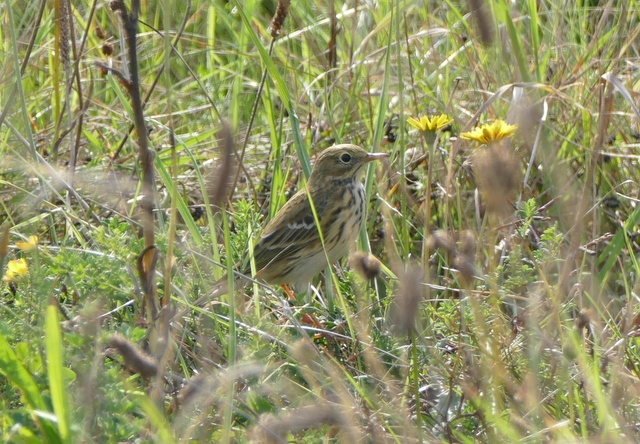 Meadow Pipit – creeping through the grass by the path
Meadow Pipit – creeping through the grass by the path
When we got up onto the hill, we couldn’t find the Whinchat among the brambles any more. But walking round to where the Stonechats had been earlier on the fence, it suddenly reappeared and with a second Whinchat too. They were very active, flycatching and flicking between patches of brambles, flashing the white patches in the base of the tail as they went. We managed to get them in the scope, but the Stonechats did not appreciate their presence, and chased the Whinchats off back over the other side of the field.
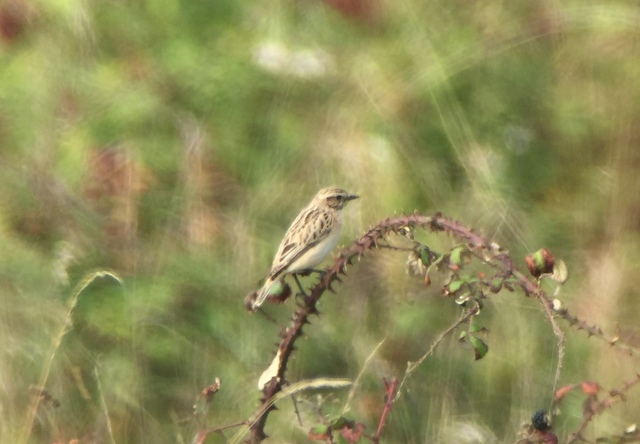 Whinchat – one of two at Kelling Quags today
Whinchat – one of two at Kelling Quags today
We were about to leave when a falcon flew quickly overhead. A Hobby, it flew out over the Quags and circled up. We watched it hawking for insects – when it caught something, it would bring its feet up to its bill to eat it on the wing. Behind us, we heard the roar of an old aircraft engine and turned to see a Spitfire looping and rolling in the sky over towards Weybourne, presumably part of the Holt/Sheringham 1940s weekend. Not the sort of bird we were looking for, and it put on almost as good a display as the Hobby.
On our way back, the Hobby clearly felt it needed to do one more pass and came low over our heads again as we walked back up the lane. We also flushed some Bullfinches from the hedgerow, probably a family party, we could see at least one young bird before they flew back up the lane calling.
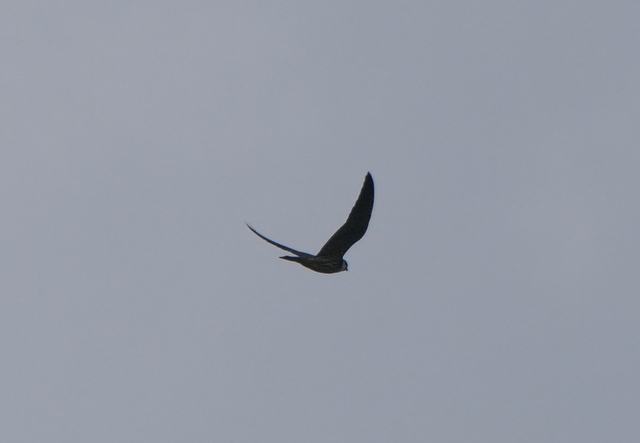 Hobby – hawking for insects overhead
Hobby – hawking for insects overhead
We had our lunch at the picnic tables back at Cley, to the soundtrack of a Water Rail screeching from the reeds just across the road. Afterwards, we made our way back west along the coast road to Stiffkey and walked out along the path to the Fen. Once again, we found it very full of water, to the extent that there was almost nothing left of the islands.
There had been 17 Spoonbills reported here earlier in the morning, but there was no sign of any at first when we got up onto the seawall. With the tide having gone out, they had probably flown out to feed. We heard a Kingfisher calling and turned to see it fly across the saltwater channel and land on the fence by the further sluice. We just had time to get a look at it in the scope before it flew again. It came straight towards us and looked as though it might land on the sluice right next to us, but seemed to notice us at the last minute. It veered away, passing below us in a flash of electric blue, then turned sharply, up over the seawall, round through the bushes and hard right down into the River Stiffkey channel out of view, calling as it went.
We turned back to the Fen, and there suddenly were two Spoonbills. Presumably they had been feeding out of view and had walked back out behind us while we were watching the Kingfisher over the other side. We got them in the scope and could see they were both adults, with yellow tips to their black bills. They stood preening for a while, before one of them started to feed, head down, sweeping its bill from side to side deep in the water.
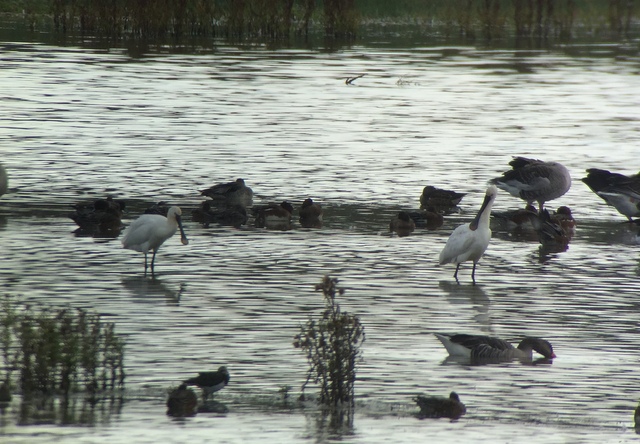 Spoonbills – these two reappeared while our backs were turned
Spoonbills – these two reappeared while our backs were turned
There was not much else on the Fen, given the high water levels. Mostly Greylag Geese with a few Canada Geese too, and a selection of ducks. The highlight of the latter was several Pintail, though the drakes were in dull eclipse plumage and they were all asleep. There was also a lot of disturbance down here today – dog walkers and cyclists up and down the path, and even several people walking out across the mudflats.
Round at the harbour, we could see lots of Oystercatcher out on the mud. We didn’t count them ourselves, but we were told there were at least 350 by someone who did. There were a few other waders as well – mainly Redshank and Curlew. A group of grey winter Knot were feeding on the edge of one of the channels. We could see several Turnstone way out in the distance, but one was feeding on the edge of the channel in front of us. It was doing just what it should – turning stones over to look for food! A single Grey Plover was on the mud nearby. There were also a good number of Brent Geese out in the harbour again today.
We walked back to the car, pausing briefly to look at Stiffkey Fen again, where an extra Spoonbill had now joined the two adults, this one a juvenile with fleshy bill lacking a yellow tip. Then we drove a short distance back further west to the other side of Stiffkey and parked down at the end of Greenway. There were lots of cars in the car park and several people staring out at the saltmarsh, but we set off to walk west towards Warham Greens. It was all rather quiet bird-wise at first, possibly not a surprise given the number of dogwalkers, cyclists and people out for a Sunday stroll along the path, as well as the odd blackberry picker lurking in the hedges.
Just past the whirligig, we flushed a Greenshank from the edge of the saltmarsh. A little mixed flock of Long-tailed Tits and Blue Tits made its way along the hedge beside us. Then, on the top of one of the hay bales by the path, we noticed a Wheatear. It had found itself a good vantage point and kept dropping down into the grass to feed before returning to its perch.
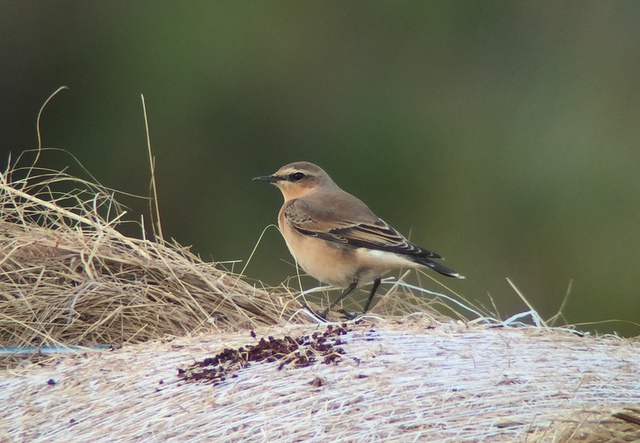 Wheatear – looking for food from the top of a hay bale
Wheatear – looking for food from the top of a hay bale
Then we picked up a lone Spoonbill feeding out on the saltmarsh. A second bird flew in from the east and dropped down nearby. Then we saw another two flying in as well. We could see them walking across the islands of vegetation before dropping down into the muddy pools to feed.
A Hen Harrier had been reported here earlier and we had hoped that we might bump into it ourselves, but it seemed like it was not to be. However, we were just about to turn round to head back, when we spotted a shape hunting low over the saltmarsh near East Hills. We got it in the scope and it was indeed the Hen Harrier, a ringtail. We got it in the scope and could see the characteristic white square at the base of the tail. It quartered low over the saltmarsh for a while before it dropped down out of view.
That seemed like a great day to wrap up the day, so we started to make our way back. Suddenly there seemed to be more life about. A Yellowhammer called from the top of the hawthorns by the path. A Brown Hare sat up in the field catching the afternoon sun. We had expected to see a Whimbrel out on the saltmarsh earlier, but we were almost back to the car when one finally flew up and past us close by. A nice way to end, then it was time to call it a day.


